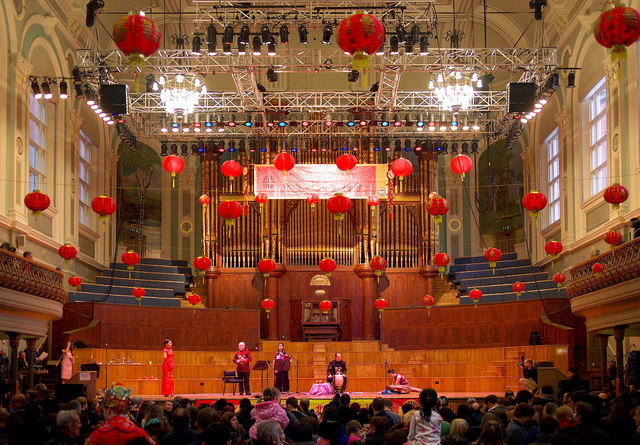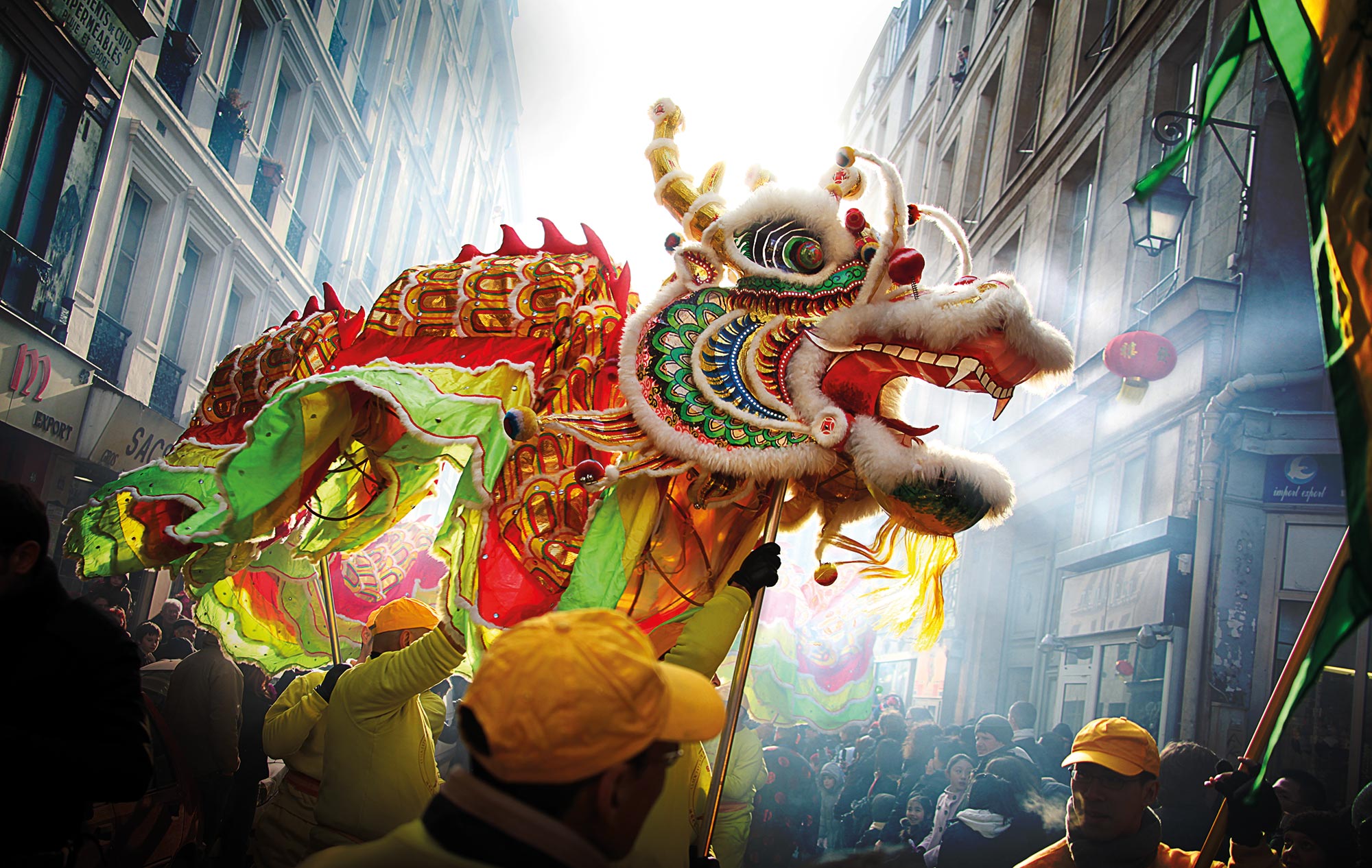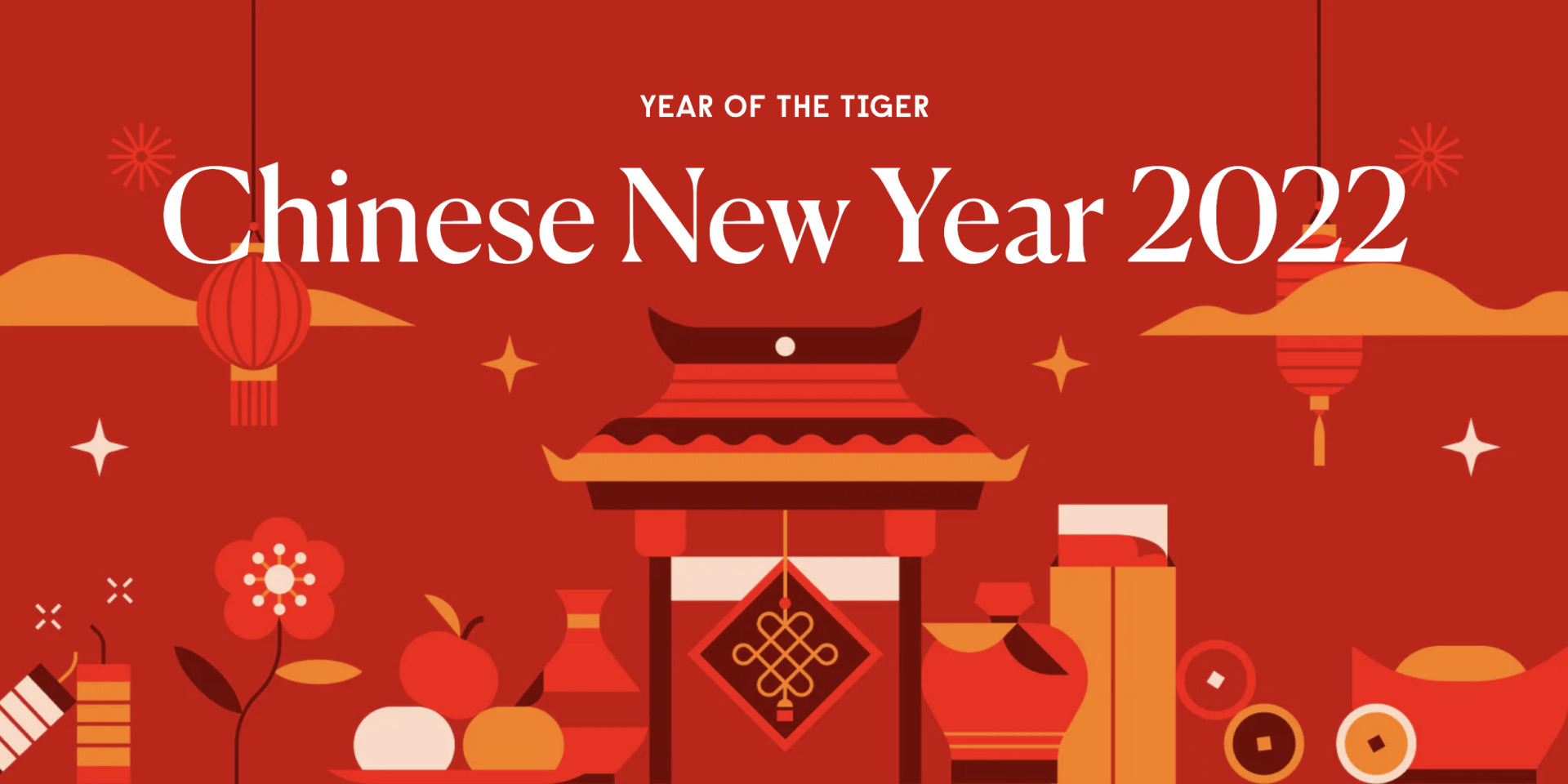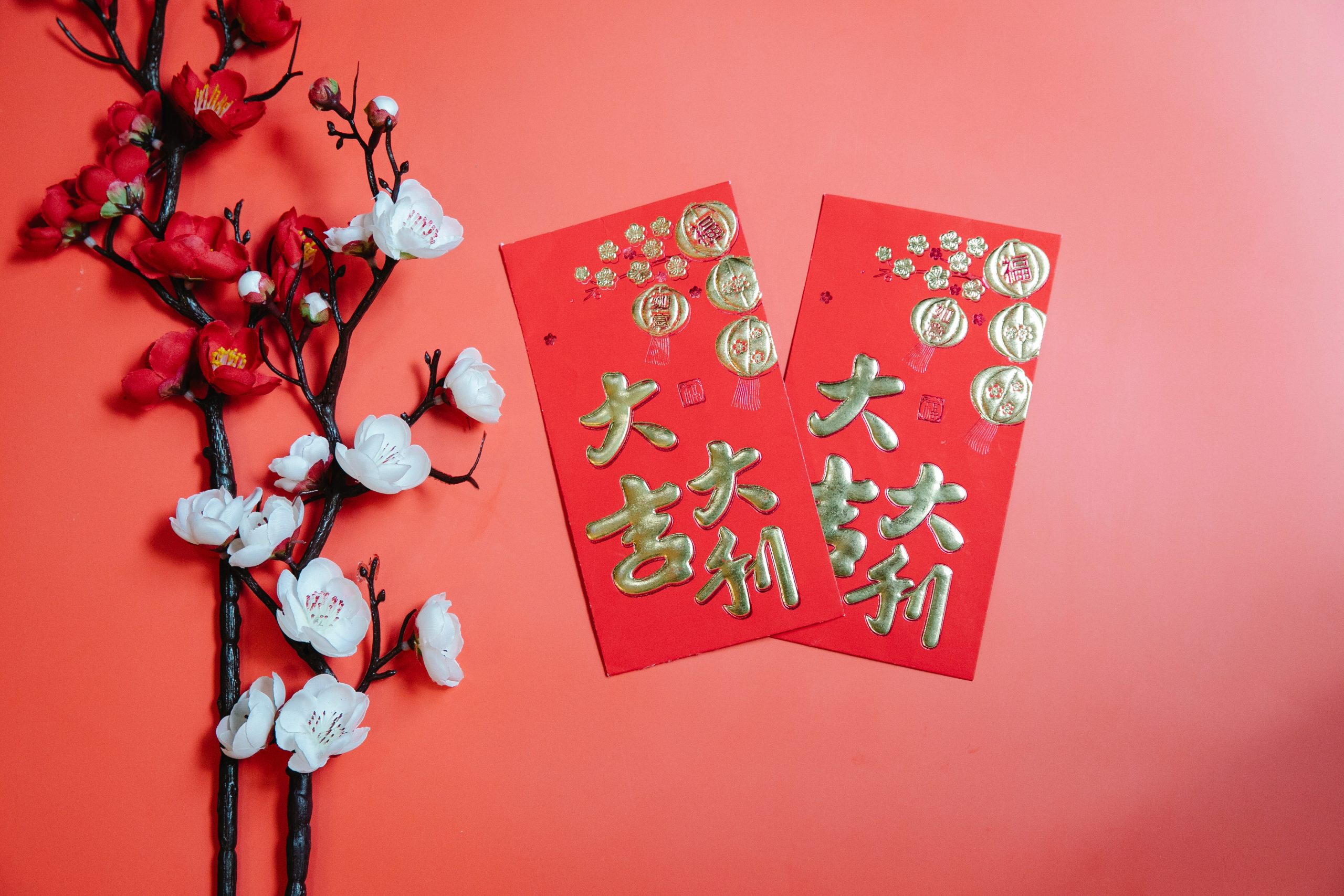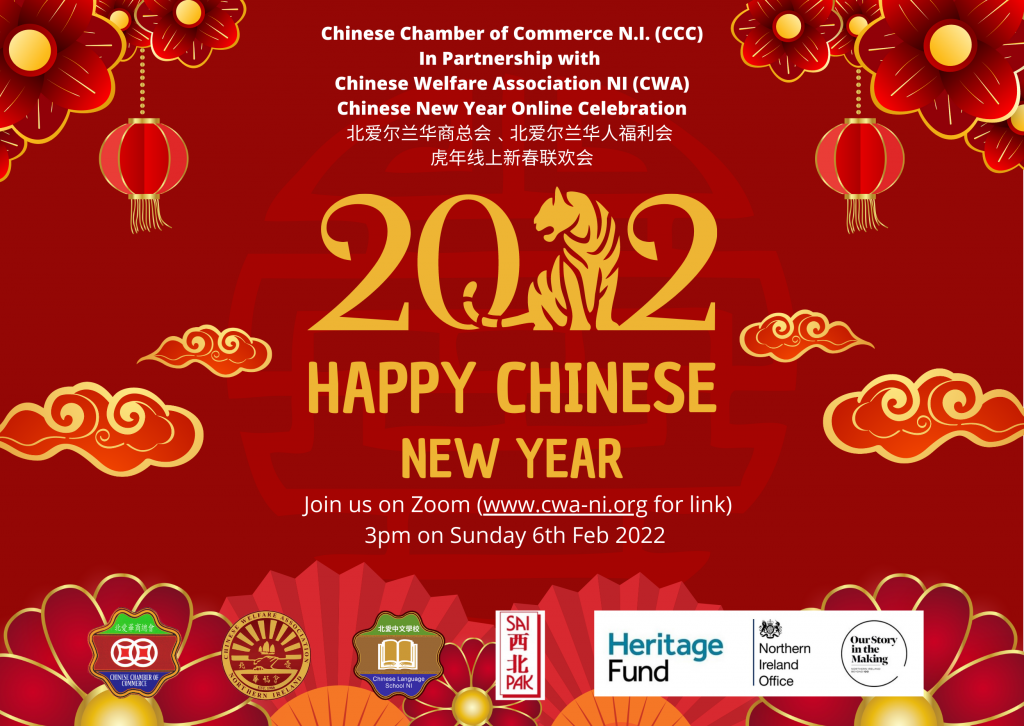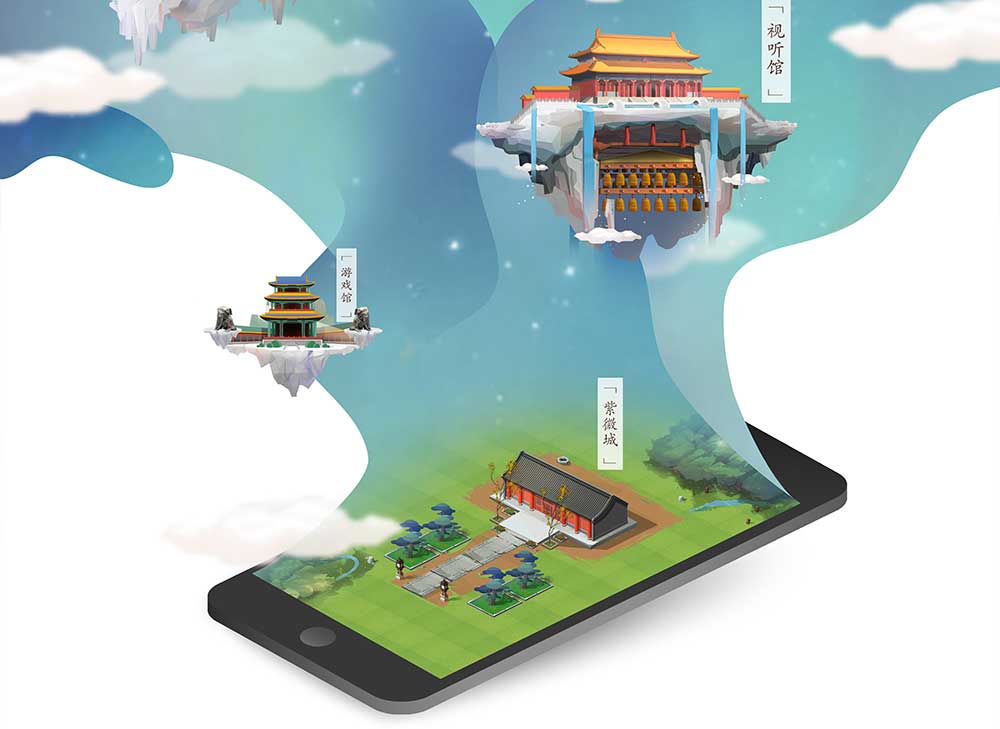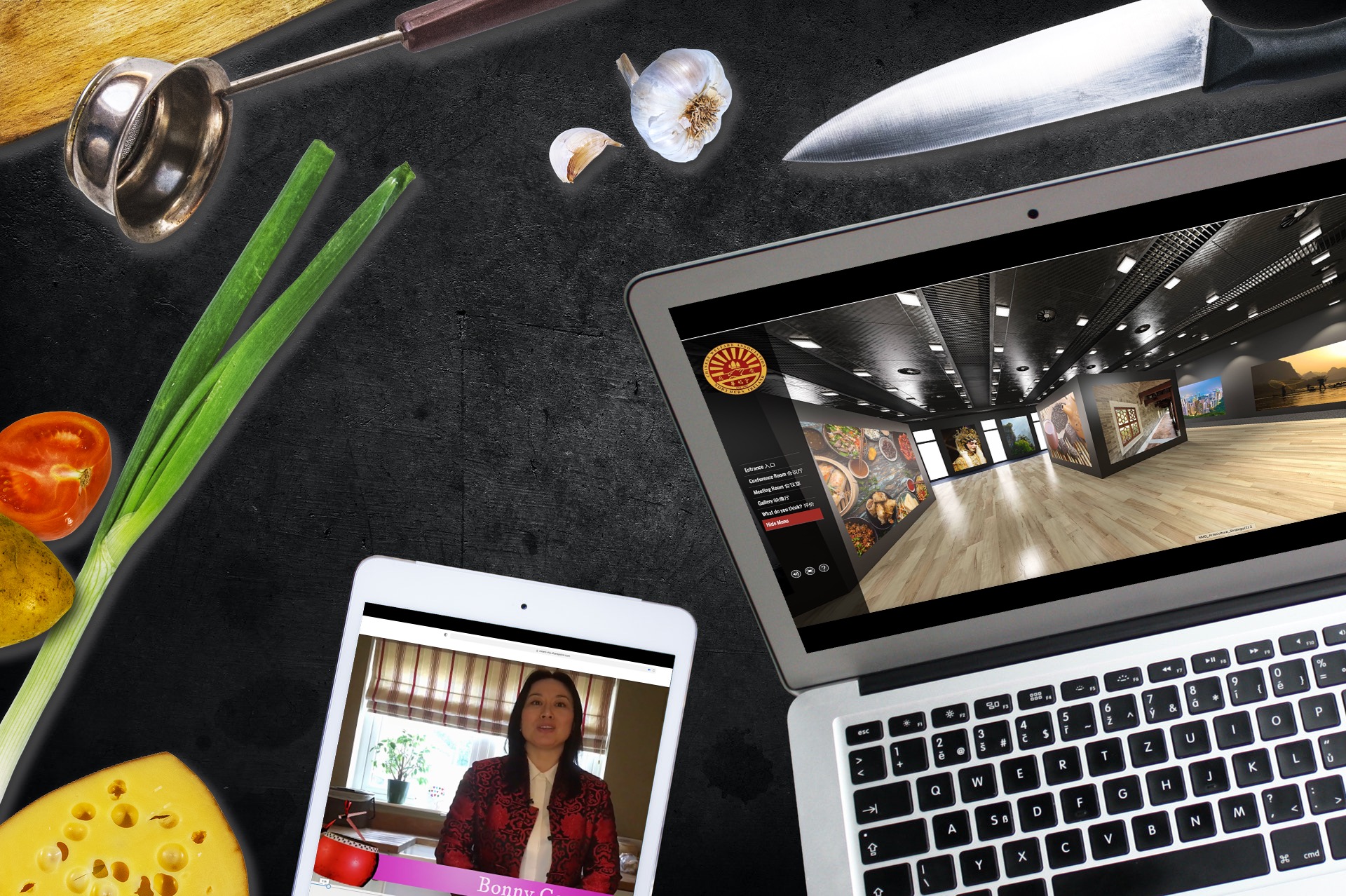Lantern Festival Lights up 2022
On the 15th day of the first lunar month, two weeks after Chinese New Year, another important traditional Chinese festival, the Chinese Lantern Festival or Yuan Xiao Jie or Yuanxiao Festival (元宵节), is celebrated. It marks the first full moon of the new lunar year and the end of the Chinese New Year (Spring Festival) period. Chinese Lantern Festival 2022 will be celebrated on Tuesday, February 15th in 2022.
On the night of the Chinese Lantern Festival, streets are decorated with colorful lanterns, often with riddles written on them. People eat sweet rice balls called tangyuan, watch dragon and lion dances, and set off fireworks.
Content Preview
Chinese Lantern Festival Facts
- Popular Chinese name: 元宵节 Yuánxiāojié /ywen-sshyaoww jyeah/ 'first night festival'
- Alternative Chinese name: 上元节 Shàngyuánjié /shung-ywen-jyeah/ 'first first festival'
- Date: Lunar calendar month 1 day 15 (February 15, 2022)
- Importance: marks the end of the Chinese New Year (Spring Festival) period
- Celebrations: enjoying lanterns, lantern riddles, eating tangyuan a.k.a. yuanxiao (ball dumplings in soup), lion dances, dragon dances, etc.
- History: about 2,000 years
- Greeting: Happy Lantern Festival! 元宵节快乐!Yuánxiāojié kuàilè! /ywen-sshyaoww-jyeah kwhy-luh/
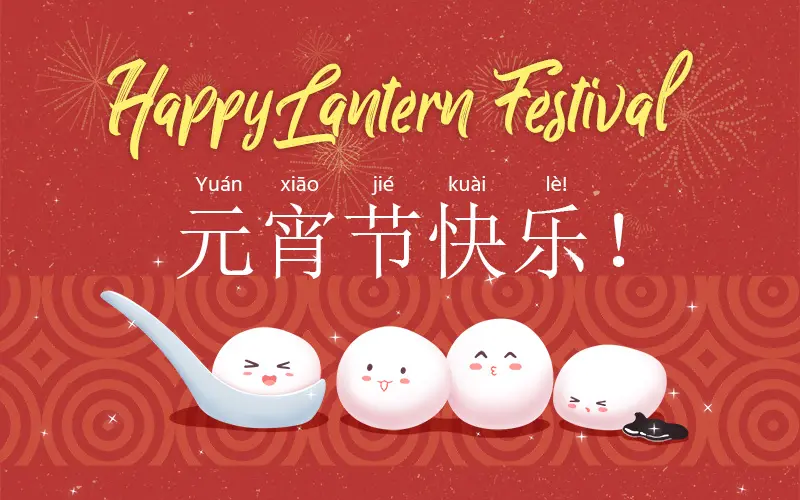
When is the Chinese Lantern Festival 2022?
Chinese Lantern Festival is on the 15th day of the first Chinese lunar month (always between February 4 and March 6). In 2022, the Chinese Lantern Festival will fall on Tuesday, February 15.
| Year | Chinese Lantern Festival Date |
|---|---|
| 2020 | February 8 |
| 2021 | February 26 |
| 2022 | February 15 |
| 2023 | February 5 |
| 2024 | February 24 |
The Significance of the Chinese Lantern Festival
Chinese New year, also called Spring Festival in China, marks the beginning of the Spring season. The Chinese Lantern Festival marks the final day of these celebrations. After the Lantern Festival, Chinese New Year taboos are no longer in effect, and all New Year decorations are taken down. Some people still wait till after the festival to return to work or study.
The lanterns symbolize people letting go of the past year and welcoming the new year with good fortune.
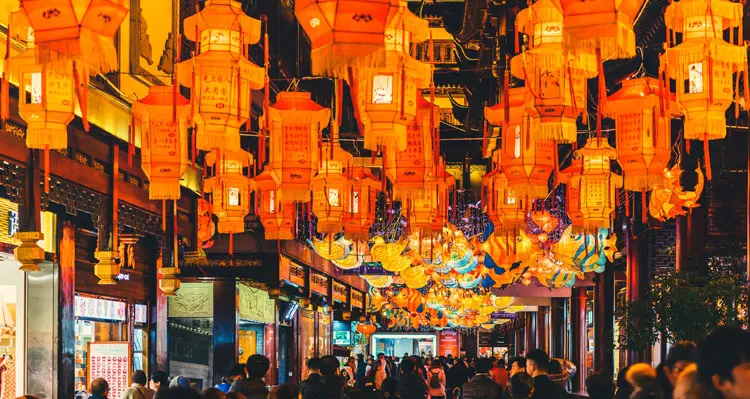 China's Lantern Festival
China's Lantern FestivalThe Origins and Stories of Chinese Lantern Festival
Chinese Lantern Festival can be traced back to 2,000 years ago. There are many origin stories about it. Here are two of the most popular ones:
Origin Story 1: A Buddhist Celebration
Ruling the beginning of the Eastern Han Dynasty (25–220), Emperor Hanmingdi was an advocate of Buddhism. He heard that some monks lit lanterns in their temples to show respect to Buddha on the fifteenth day of the first lunar month.
Therefore, he ordered that all the temples, households, and royal palaces should light lanterns on that evening. This Buddhist custom gradually became a grand festival among the people of China.
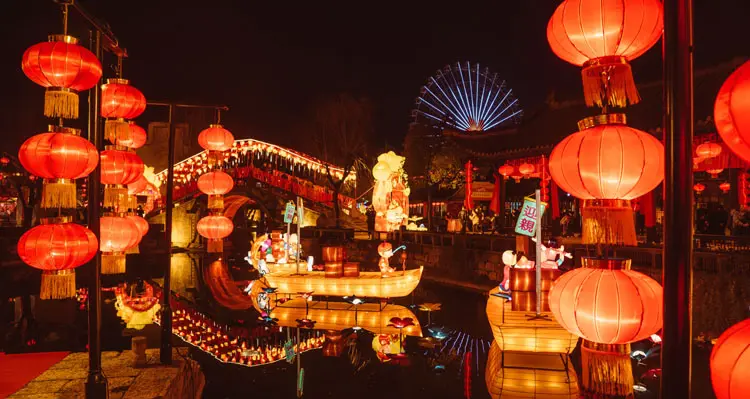
Origin Story 2: A Trick Played on the Jade Emperor
A legend has it that the Jade Emperor's favorite crane was killed by some villagers. So, he decided to destroy the village with fire on the fifteenth day of the lunar year. The Jade Emperor's daughter felt very sad about this and warned the villagers about what was going to happen.
Then, a wise man advised the villagers to hang red lanterns to give the Jade Emperor the impression that the village was already on fire. The emperor was fooled and the village survived. This tradition of hanging red lanterns on the fifteenth day of the lunar year has continued until the present time.
History of Chinese New Year
All good stories change bit over time, as each teller adds a little or changes something. A story that is over 3,500 years old has been told many times and it has taken on a life of its own.
The story of how the most important holiday in Chinese culture began is no different but many of the best bits have remained unchanged. The centuries-old legend of the origins of the Chinese New Year celebration always includes a story of a terrible mythical monster preying on villagers. The lion-like monster’s name was Nian (年), which is also the Chinese word for “year."
The stories often include a wise old man who counsels the villagers to ward off the evil Nian by making loud noises with drums and firecrackers and by hanging red paper cutouts and scrolls on their doors, because Nian is scared of the color red.So the villagers took the old man’s advice and Nian was conquered. On the anniversary of the date, the Chinese recognize the “passing of the Nian,” known in Chinese as guo nian (过年), which is synonymous with celebrating the new year.
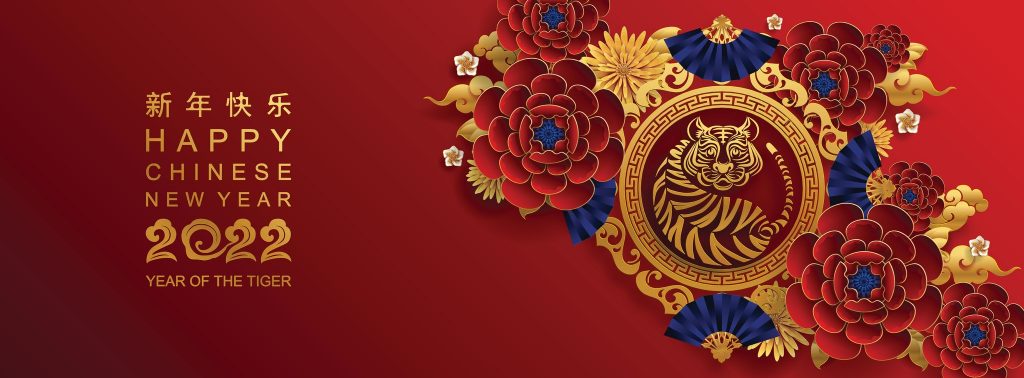 Lunar Calendar
Lunar Calendar
The date of Chinese New Year changes each year because it's based on the lunar calendar. While the western Gregorian calendar is based on the Earth’s orbit around the sun, the date of Chinese New Year is determined according to the moon’s orbit around the Earth. Chinese New Year falls on the second new moon after the winter solstice. Other Asian countries such as Korea, Japan, and Vietnam also celebrate the new year using the lunar calendar.
While Buddhism and Daoism have unique customs during the New Year, Chinese New Year is far older than both religions. As with many agrarian societies, Chinese New Year is rooted in a celebration of spring, like Easter or Passover.
Depending on where it's grown, the rice season in China lasts roughly from May to September (north China), April to October (Yangtze River Valley), or March to November (Southeast China). The New Year was likely the start of preparations for a new growing season.
Traditional Customs
On Chinese New Year, families travel long distances to meet and make merry. Known as the "Spring movement" or Chunyun (春运), a great migration takes place in China during this period as many travelers brave crowds to get to their hometowns.
Though the holiday is actually just a week long, traditionally it's celebrated as a 15-day holiday when firecrackers are lit, drums are heard on the streets, red lanterns glow at night, and red paper cutouts and calligraphy hang on doors. Children are also given red envelopes containing money. Many cities around the world hold New Year parades complete with dragon and lion dances. Celebrations conclude on the 15th day with the Lantern Festival.
Spring cleaning is a common theme during this time. Many Chinese families clean out their homes during the holiday. The New Year celebration could also have been a way to break up the boredom of the long winter months.
Food is an important component of the New Year. Traditional foods to eat include nian gao (sweet sticky rice cake) and savory dumplings.
Chinese New Year vs. Spring Festival
In China, New Year celebrations are synonymous with Spring Festival (春节 or chūn jié), which is typically a week-long celebration. The origins of this renaming from "Chinese New Year" to “Spring Festival” are fascinating and not widely known.
Chinese New Year, also known as the Lunar New Year or the Spring Festival, is the most important among the traditional Chinese festivals. The origin of the Chinese New Year festival can be traced back to about 3,500 years ago.
Chinese New Year has evolved over a long period of time and its customs have undergone a long development process.
Chinese Year Year - Over 3500 Years in the Making
 Chinese New Year's Origin: In the Shang Dynasty
Chinese New Year's Origin: In the Shang Dynasty
Chinese New Year has enjoyed a history of about 3,500 years. Its exact beginning is not recorded. Some people believe that Chinese New Year originated in the Shang Dynasty(1600–1046 BC), when people held sacrificial ceremonies in honor of gods and ancestors at the beginning or the end of each year.
Chinese Calendar "Year" Established: In the Zhou Dynasty
The term Nian ('year') first appeared in the Zhou Dynasty (1046–256 BC). It had become a custom to offer sacrifices to ancestors or gods, and to worship nature in order to bless harvests at the turn of the year.
Chinese New Year Date Was Fixed: In the Han Dynasty
The date of the festival, the first day of the first month in the Chinese lunar calendar, was fixed in the Han Dynasty (202 BC – 220 AD). Certain celebration activities became popular, such as burning bamboo to make a loud cracking sound.
In the Wei and Jin Dynasties
In the Wei and Jin dynasties (220–420), apart from worshiping gods and ancestors, people began to entertain themselves. The customs of a family getting together to clean their house, having a dinner, and staying up late on New Year’s Eve originated among common people.
More Chinese New Year Activities: From the Tang to Qing Dynasties
The prosperity of economies and cultures during the Tang, Song, and Qing dynasties accelerated the development of the Spring Festival. The customs during the festival became similar to those of modern times.
Setting off firecrackers, visiting relatives and friends, and eating dumplings became important parts of the celebration.
More entertaining activities arose, such as watching dragon and lion dances during the Temple Fair and enjoying lantern shows.
The function of the Spring Festival changed from a religious one to entertaining and social ones, more like that of today.
In Modern Times
In 1912, the government decided to abolish Chinese New Year and the lunar calendar, but adopted the Gregorian calendar instead and made January 1 the official start of the new year.
After 1949, Chinese New Year was renamed to the Spring Festival. It was listed as a nationwide public holiday.
Learn Some New Year Greetings
Why not Use this Chinese New Year to learn some Chinese, and get involved.
Its the perfect time to pick up a few phrases and learn some traditional greetings and join in the fun of New Year. We all think its hard to learn a new language, but with a little practice and some friends to help we can have you speaking Chinese in no time. So why not make it your New Year's Resolution to learn a few phrases and say hello to new friends.
https://youtu.be/DW772LsDUzY
Chinese New Year 2022 Year of the Tiger
A new year is upon us as we boldly enter 2022 Year of the Tiger.
我们即将迎来2022年——壬寅虎年。
2022 is a special year for me it’s běn mìng nián本命年 – the year of my birth accordingly to the cycle of 12 animals on the Chinese Zodiac. You can work out my age but it will be a multiple of 12!
对我而言,2022年是一个特殊的年份。按十二生肖的排序来讲,今年是我的本命年。你可以计算出我的年龄,它是12的倍数!
It has been a challenging year for us all, but we are hopeful that we have turned the corner and that 2022 will be a brighter and better.
对于我们所有人而言,过去的一年无疑是充满挑战的一年,但我们并没有失去对更加光明和美好的2022年的期望。
We therefore warmly welcome you to our online CNY event on Sunday 6th Feb at 3pm. You can watch it on Youtube and join us on Zoom.
因此,我们诚挚邀请您参加我们在 2 月 6 日星期日下午 3 点举行的在线 CNY 活动。 您可以在 Youtube 上观看直播或加入我们 Zoom 以获得更多互动体验。
We will have a mix of song, dance, music which should get you into the mood of the Year of the Tiger. 在这场活动中将会混合歌曲、舞蹈和音乐,它们将会让您沉浸在虎年的气氛中。
So, stick it in your reminders and see you soon! Please do support us and share widely amongst your family and friends.
欧巍立
William Olphert Managing Director
Topic: 2022 CWA Virtual Chinese New Year Celebration
Time: Feb 6, 2022 03:00 PM London
https://us06web.zoom.us/j/8835674626?pwd=NEExcGhONjUvYWdiN0tEd2tDK09MUT09
Meeting ID: 883 567 4626
Passcode: cwacny
EVENTBRITE:
2022 CWA Virtual Chinese New Year Celebration 2022虎年北爱华福会线上春节庆典 Tickets, Sun 6 Feb 2022 at 15:00 | Eventbrite
Chinese Virtual Centre Pre-Release Phase
We are pleased to announce the pre-release phase of our exciting new Virtual Chinese Resource Centre. We would love to hear feedback from a range of stakeholders and potential users. Thanks to all those who are taking part in our BETA test of our new virtual Chinese Resource Centre of NI, and we hope you enjoy your first experience.
We welcome your feedback in English or Chinese from inside the app or by a direct email.
We would ask you to not share the link with anyone else at this stage or in any public arena or social media site as we will need to make some final tweaks before public launch.
This will be a space that CWA plans to develop in the future for art exhibitions, conferences, online museum and other uses.
Keeping The Centre at the centre is our motto and we are delighted that we can now extend this to the digital world
Whats Cooking in our New Virtual Centre
The new Virtual Chinese Resource Centre has been made possible by funding from the Department For Communities. The Community Heritage Fund opened in November 2020. It aimed i to support small-scale projects in Northern Ireland which help connect communities to the heritage in their local area. The objective was to help people connect with and benefit from the heritage located on their doorstep such as buildings, monuments, landscapes, parks and sports grounds. Through sharing stories about the everyday places and finding out about the past, it was seem as a way of helping strengthen our connections with the community around us.
The Chinese community have a rich and varied heritage, and much of what we value is specific to Northern Ireland having been here over 50 years. The aim of our project was to face some of the challenges of COVID and to help people reconnect with the Chinese Community and to help our members enjoy and promote their own cultural heritage.
Paul Mullan, the Director of The National Lottery Heritage Fund here in Northern Ireland said:
"The experience of the lockdown in response to coronavirus (COVID-19) was a powerful reminder of the value and importance of the local environment to communities. Connecting with nature and heritage can be critical for maintaining personal mental and physical wellbeing. We would like to build on this by helping people to strengthen their connections with their local area, tell their stories and find out about their past and the places where they live. Whether they live in a city, a town or the countryside, everyone can benefit from the heritage of their immediate environment such as the buildings, monuments and landscapes that can be found within 15 minutes or so from their front door."
This struck a chord with our members and we worked hard with heritage and digital experts to turn the challenges of COVID into opportunities and to make practical solutions for the problems we faced. The result is an exciting now Virtual versions of our Chinese Resource Centre. Here we can hoist events and run activities online just as we usually do in the Centre. We see this as a great way of connecting with people and helping them access our heritage and culture.
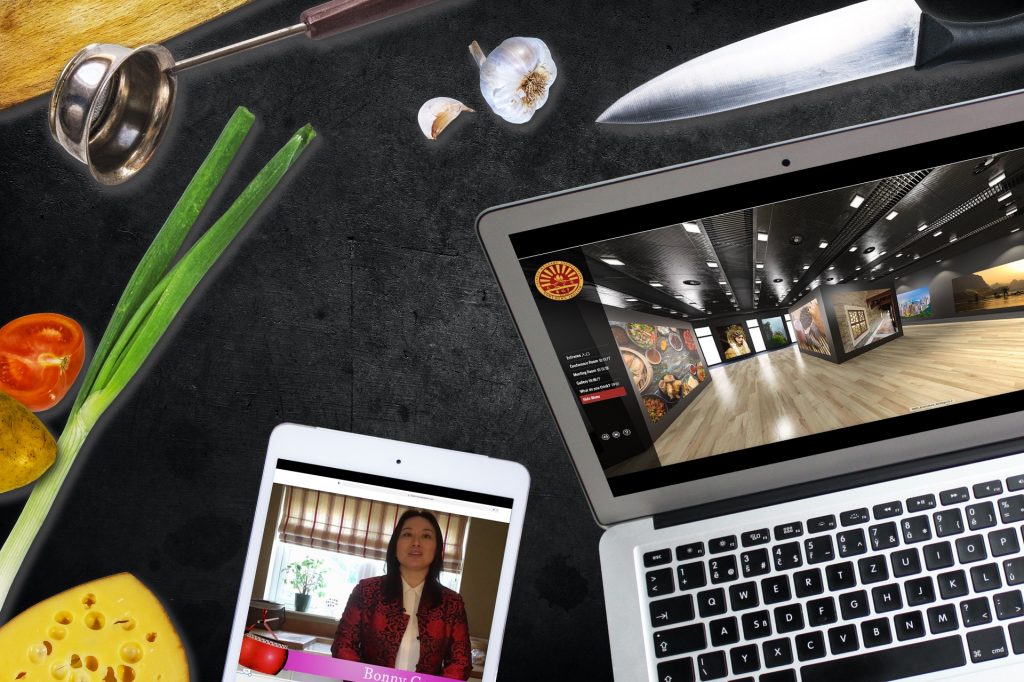
Whats Cooking?
One great example is to bring the rich heritage of Chinese food to life, with young people taking the led. So why not visit our Virtual space and learn more about the different styles of Chinese cooking, and then take a tour of our Virtual Gallery where you can learn more.
Our online resources and how-to videos, will soon get you cooking, as you watch Bonny and her son explain the background to Chinese Food and how it is important in family life.
Then try to keep up with our exciting new talent of the future as he cooks up everyone's favourite.
History of Chinese New Year
All good stories change bit over time, as each teller adds a little or changes something. A story that is over 3,500 years old has been told many times and it has taken on a life of its own.
The story of how the most important holiday in Chinese culture began is no different but many of the best bits have remained unchanged. The centuries-old legend of the origins of the Chinese New Year celebration always includes a story of a terrible mythical monster preying on villagers. The lion-like monster’s name was Nian (年), which is also the Chinese word for “year."
The stories often include a wise old man who counsels the villagers to ward off the evil Nian by making loud noises with drums and firecrackers and by hanging red paper cutouts and scrolls on their doors, because Nian is scared of the color red.So the villagers took the old man’s advice and Nian was conquered. On the anniversary of the date, the Chinese recognize the “passing of the Nian,” known in Chinese as guo nian (过年), which is synonymous with celebrating the new year.

Lunar Calendar
The date of Chinese New Year changes each year because it's based on the lunar calendar. While the western Gregorian calendar is based on the Earth’s orbit around the sun, the date of Chinese New Year is determined according to the moon’s orbit around the Earth. Chinese New Year falls on the second new moon after the winter solstice. Other Asian countries such as Korea, Japan, and Vietnam also celebrate the new year using the lunar calendar.
While Buddhism and Daoism have unique customs during the New Year, Chinese New Year is far older than both religions. As with many agrarian societies, Chinese New Year is rooted in a celebration of spring, like Easter or Passover.
Depending on where it's grown, the rice season in China lasts roughly from May to September (north China), April to October (Yangtze River Valley), or March to November (Southeast China). The New Year was likely the start of preparations for a new growing season.
Traditional Customs
On Chinese New Year, families travel long distances to meet and make merry. Known as the "Spring movement" or Chunyun (春运), a great migration takes place in China during this period as many travelers brave crowds to get to their hometowns.
Though the holiday is actually just a week long, traditionally it's celebrated as a 15-day holiday when firecrackers are lit, drums are heard on the streets, red lanterns glow at night, and red paper cutouts and calligraphy hang on doors. Children are also given red envelopes containing money. Many cities around the world hold New Year parades complete with dragon and lion dances. Celebrations conclude on the 15th day with the Lantern Festival.
Spring cleaning is a common theme during this time. Many Chinese families clean out their homes during the holiday. The New Year celebration could also have been a way to break up the boredom of the long winter months.
Food is an important component of the New Year. Traditional foods to eat include nian gao (sweet sticky rice cake) and savory dumplings.
Chinese New Year vs. Spring Festival
In China, New Year celebrations are synonymous with Spring Festival (春节 or chūn jié), which is typically a week-long celebration. The origins of this renaming from "Chinese New Year" to “Spring Festival” are fascinating and not widely known.
Chinese New Year, also known as the Lunar New Year or the Spring Festival, is the most important among the traditional Chinese festivals. The origin of the Chinese New Year festival can be traced back to about 3,500 years ago.
Chinese New Year has evolved over a long period of time and its customs have undergone a long development process.
Chinese Year Year - Over 3500 Years in the Making
 Chinese New Year's Origin: In the Shang Dynasty
Chinese New Year's Origin: In the Shang Dynasty
Chinese New Year has enjoyed a history of about 3,500 years. Its exact beginning is not recorded. Some people believe that Chinese New Year originated in the Shang Dynasty(1600–1046 BC), when people held sacrificial ceremonies in honor of gods and ancestors at the beginning or the end of each year.
Chinese Calendar "Year" Established: In the Zhou Dynasty
The term Nian ('year') first appeared in the Zhou Dynasty (1046–256 BC). It had become a custom to offer sacrifices to ancestors or gods, and to worship nature in order to bless harvests at the turn of the year.
Chinese New Year Date Was Fixed: In the Han Dynasty
The date of the festival, the first day of the first month in the Chinese lunar calendar, was fixed in the Han Dynasty (202 BC – 220 AD). Certain celebration activities became popular, such as burning bamboo to make a loud cracking sound.
In the Wei and Jin Dynasties
In the Wei and Jin dynasties (220–420), apart from worshiping gods and ancestors, people began to entertain themselves. The customs of a family getting together to clean their house, having a dinner, and staying up late on New Year’s Eve originated among common people.
More Chinese New Year Activities: From the Tang to Qing Dynasties
The prosperity of economies and cultures during the Tang, Song, and Qing dynasties accelerated the development of the Spring Festival. The customs during the festival became similar to those of modern times.
Setting off firecrackers, visiting relatives and friends, and eating dumplings became important parts of the celebration.
More entertaining activities arose, such as watching dragon and lion dances during the Temple Fair and enjoying lantern shows.
The function of the Spring Festival changed from a religious one to entertaining and social ones, more like that of today.
In Modern Times
In 1912, the government decided to abolish Chinese New Year and the lunar calendar, but adopted the Gregorian calendar instead and made January 1 the official start of the new year.
After 1949, Chinese New Year was renamed to the Spring Festival. It was listed as a nationwide public holiday.

